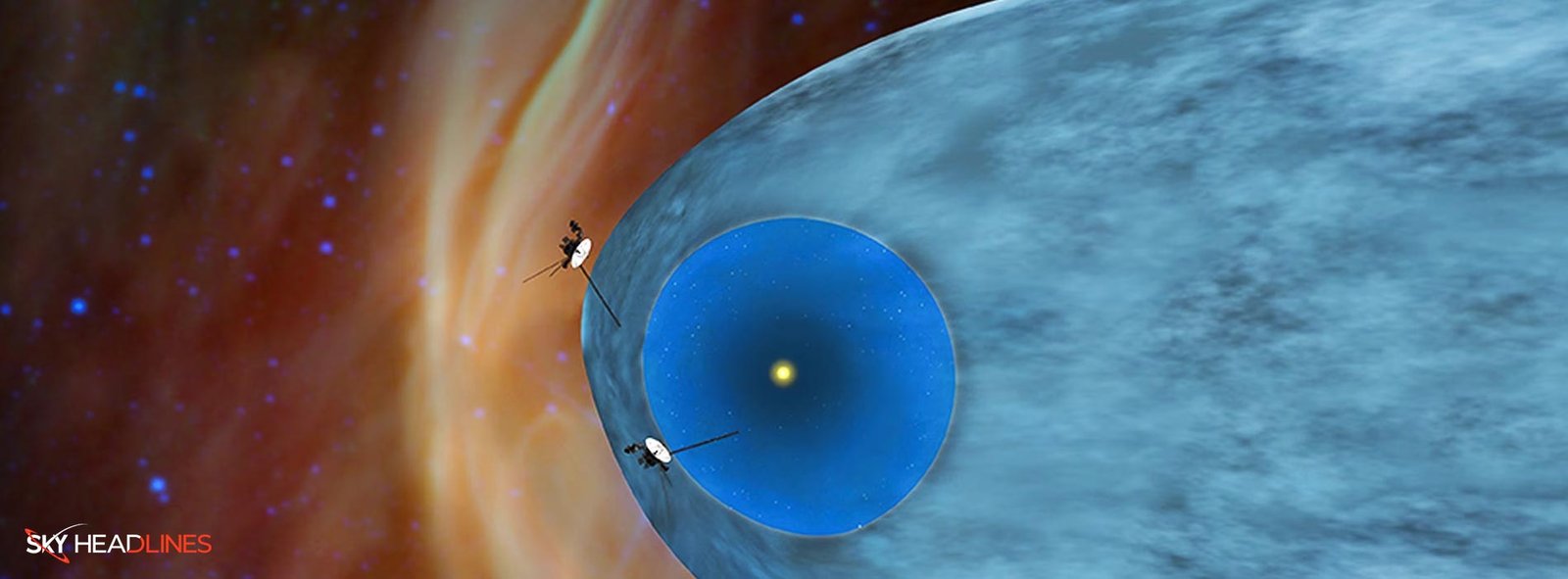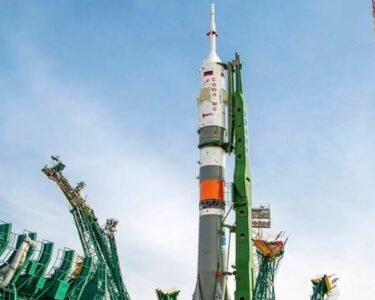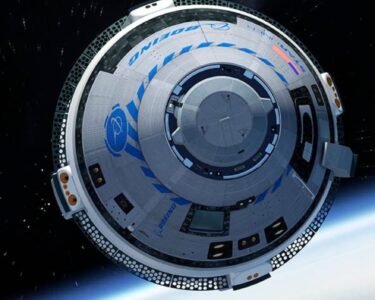For more than four decades, NASA’s Voyager spacecraft have been venturing into the farthest reaches of our solar system and beyond. Voyager Mission Launched in 1977, the twin spacecraft. The purpose of Voyager 1 and Voyager 2 was to explore the outer planets of our solar system and study their atmospheres, rings, and moons. However, their mission didn’t end there. Both Voyager probes continue to send data back to Earth as they travel through interstellar space, becoming the first human-made objects to do so.
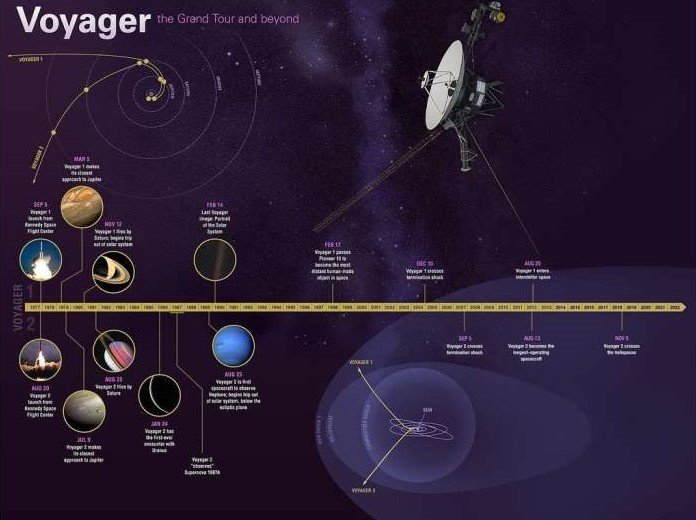
Before we go further, let’s dig into the mission with a brief,
Overview:
NASA’s Voyager mission is one of the most remarkable space exploration initiatives to date. Approved in May 1972, this mission has allowed us to gain knowledge about the outer planets that had not existed in all of the preceding histories of astronomy and planetary science. The Voyagers have been working tirelessly for over three decades and continue to provide valuable information about our universe. This article will explore some fascinating facts about the Voyager mission.
You should also know,
What was the cost of the Voyager Mission?
The total cost of the Voyager mission, including launch vehicles, radioactive power sources (RTGs), and DSN tracking support, is 865 million dollars. While this may sound expensive, it’s essential to put it in perspective. On a per-capita basis, the cost is only 8 cents per U.S. resident per year or roughly half the cost of one candy bar each year since project inception. Moreover, the entire cost of Voyager is a fraction of the daily interest on the U.S. national debt.
Effort and Time Devoted:
A total of 11,000 workers were devoted to the Voyager project through the Neptune encounter. This is equivalent to one-third of the effort estimated to complete the great pyramid at Giza to King Cheops. It’s an incredible feat that highlights the dedication and perseverance of the skilled personnel involved in this mission.
Now, we will be discussing the objectives of the mission.
What are the Objectives of the Voyager Interstellar Mission (VIM)?
The Voyager Interstellar Mission (VIM) aims to push NASA’s exploration of the solar system beyond the outer planets. It seeks to reach the farthest limits of the Sun’s sphere of influence and beyond. The mission is an extension of the initial objective. It aims to study the outer solar system environment and identify the heliopause boundary. Additionally, it seeks to explore the outer limits of the Sun’s magnetic field and study the outward flow of the solar wind.
The VIM is an ongoing mission that continues to provide valuable insights into the outer regions of our solar system. The heliopause boundary separates the solar wind and interstellar medium. If it’s penetrated, measurements can be made. These measurements will be unaffected by the solar wind and will pertain to interstellar fields, particles, and waves.
Now, let’s discuss each spacecraft separately in detail. We will be starting with the,
Voyager 1 – Overview:
Voyager 1, launched by NASA’s Jet Propulsion Laboratory in 1977, is the farthest spacecraft from Earth.
The primary mission of Voyager 1 was to fly by Jupiter and Saturn. However, it crossed into interstellar space in August 2012. Voyager 1 still transmits valuable data back to Earth. Voyager 1 and its sister spacecraft, Voyager 2, have been in operation for over four decades. This makes them the longest-running spacecraft in history.
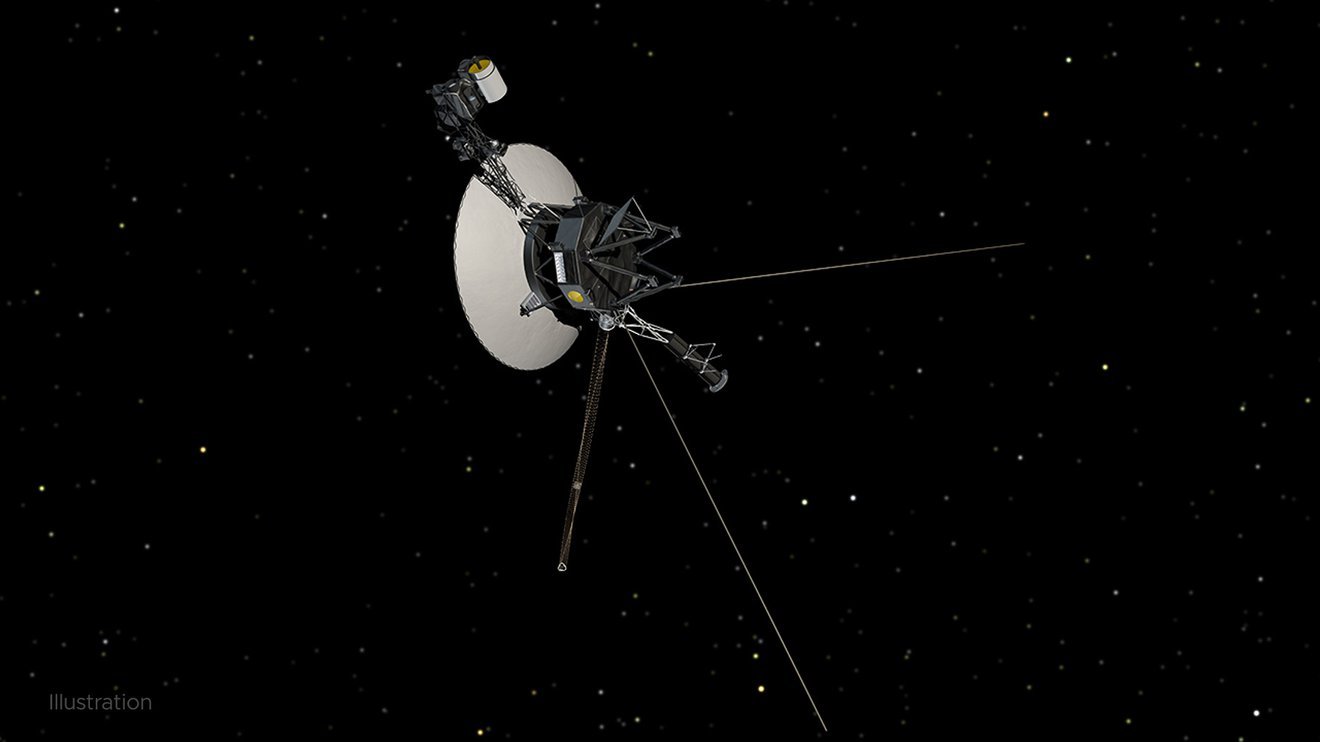
These missions provide unparalleled observations of space, and they have helped scientists understand energy and radiation in space. This data is critical for the future of space exploration, including protecting future missions and astronauts. The Voyager 1 spacecraft weighs 1,592 pounds (721.9 kilograms) and was launched using a Titan IIIE-Centaur rocket from Launch Complex 41 at Cape Canaveral, Florida on September 5, 1977. NASA and JPL manage the mission design and operation.
Voyager 1 has a copy of the Golden Record on board. The record serves as a message from humanity to the cosmos. It contains greetings in 55 different languages. It also has photographs of people and places on Earth. The record includes music from various cultures. The music includes classical compositions by Beethoven and a rock ‘n’ roll hit “Johnny B. Goode” by Chuck Berry.
Now, let’s find out the,
What are the objectives of Voyager 1?
The main objective of Voyager 1 was to conduct a flyby of Jupiter and Saturn and to study their moons and rings in detail. Additionally, the spacecraft was tasked with collecting data on the interstellar medium and the boundary between our solar system and interstellar space.
Voyager 1, a spacecraft, has a golden record on board that contains sounds and images representing humanity. The record includes in case the spacecraft is ever found by extraterrestrial life. The Voyager 1 mission was successful. It exceeded expectations and provided insights into our solar system and beyond. The mission was valuable.
If you are wondering,
How Voyager 1 has achieved these objectives?
To achieve its objectives, Voyager 1 was equipped with a suite of scientific instruments. This allows it to capture high-resolution images of planets and moons, and analyze ultraviolet light. Moreover, it allows measuring the temperature and composition of gases in outer planet atmospheres. The spacecraft also conducted various studies. Voyager 1 studied radio signals emitted by planets. Furthermore, measured the polarization of sunlight reflected by planets. It measured magnetic fields around planets. It also measured charged particles in magnetospheres and the interplanetary medium. Additionally, Voyager 1 detected and analyzed radio and plasma waves in magnetospheres. The Voyager 1 spacecraft had various scientific objectives. One of them was to measure cosmic rays in the interstellar medium. It also studied the atmospheres, ionospheres, and rings of planets and moons. It accomplished this through the use of a Radio Science System.
What achievements did Voyager one have made so far?
Voyager 1’s achievements have been groundbreaking and have paved the way for future space exploration missions. Voyager 1 has achieved many milestones throughout its mission, including being the first spacecraft to cross the heliosphere, the boundary where the influences outside our solar system are stronger than those from our Sun. As a result, it became the first human-made object to venture into interstellar space.
Voyager 1 also made important discoveries about the outer planets during its journey. For example, it discovered a thin ring around Jupiter and two new Jovian moons: Thebe and Metis. At Saturn, Voyager 1 found five new moons and a new ring called the G-ring.
In addition to its planetary discoveries, Voyager 1 carried a suite of scientific instruments that allowed it to study the space environment in great detail. The data returned from these instruments has helped to further our understanding of the solar wind, cosmic rays, and the structure of the heliosphere.
Its legacy as a trailblazing spacecraft continues to inspire scientists and engineers alike.
Now, its time to dig into the,
Voyager 2- Overview:
Voyager 2 has been a groundbreaking mission that has provided us with a wealth of information about our solar system’s outer reaches. It is one of NASA’s most iconic spacecraft. The spacecraft was launched on August 20, 1977, from Cape Canaveral, Florida. The purpose of spacecraft was built to take advantage of a rare planetary alignment to explore the outer planets of our solar system. Weighing 1,592 pounds (721.9 kilograms), Voyager 2 is similar to its twin spacecraft, Voyager 1, and is managed by NASA’s Jet Propulsion Laboratory.
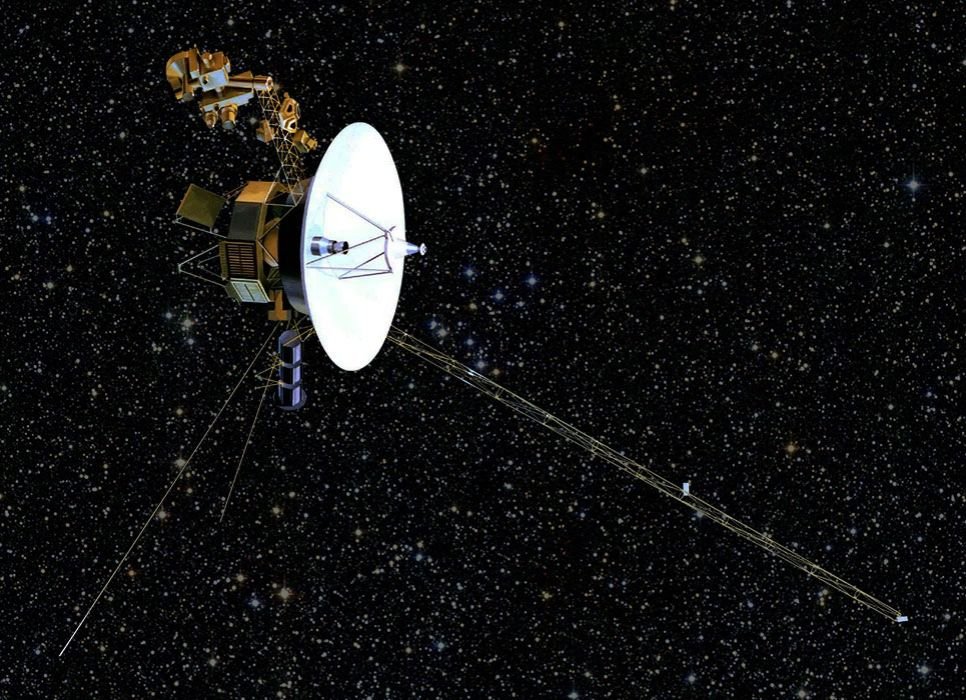
The spacecraft was launched aboard a Titan IIIE-Centaur launch vehicle, also known as TC-7, from Launch Complex 41 in Cape Canaveral. After launch, Voyager 2 began its journey towards Jupiter, where it arrived in 1979. The spacecraft continued to Saturn, Uranus, and Neptune, becoming the first and only spacecraft to visit these outer planets. Its successful mission made Voyager 2 the second human-made object to enter interstellar space after its twin, Voyager 1.
One of the key features of Voyager 2 was its scientific instrumentation. The spacecraft carried a suite of scientific instruments designed to study the atmospheres, surfaces, and magnetic fields of the outer planets and the space between them. The data collected by Voyager 2 has greatly expanded our knowledge of the outer solar system and provided invaluable insights into the nature of these distant planets and their moons.
It remains an active spacecraft, and scientists continue to study the data it sent back to Earth, as well as the conditions of interstellar space that it is currently exploring.
What are the objectives of Voyager 2?
The purpose of Voyager 2 was to explore the outer planets of our solar system, which include Jupiter, Saturn, Uranus, and Neptune. To achieve this objective, the spacecraft had various scientific instruments such as cameras, spectrometers, magnetometers, and particle detectors. These tools helped in studying the planets, moons, rings, and atmospheres.
The mission also had a secondary objective, which was to study the heliosphere. This area is affected by the solar wind, and Voyager 2’s instruments were used to study the solar wind’s properties, interplanetary magnetic fields, and other outer solar system phenomena.
What are the features of Voyager 2?
The management of Voyager 2n is under JPL. However, NASA designs this space craft with a suite of scientific instruments to study the outer planets and the edge of our solar system. Its instruments included an Imaging Science System (ISS), Ultraviolet Spectrometer (UVS), Infrared Interferometer Spectrometer (IRIS), Planetary Radio Astronomy Experiment (PRA), Photopolarimeter (PPS), Triaxial Fluxgate Magnetometer (MAG), Plasma Spectrometer (PLS), Low-Energy Charged Particles Experiment (LECP), Plasma Waves Experiment (PWS), Cosmic Ray Telescope (CRS), and Radio Science System (RSS). The ISS captured visible and infrared light images, the UVS provided atmospheric composition insights, and the IRIS measured thermal radiation to reveal planet temperatures and compositions. The other instruments measured the properties of plasma, magnetic fields, and cosmic ray fluxes to provide information about the outer solar system and the heliopause boundary.
What achievements have Voyager 2 made so far?
Voyager 2 is a remarkable spacecraft with numerous accomplishments. It is the only spacecraft to have studied all four of the giant planets of our solar system up close. During its mission, Voyager 2 discovered a 14th moon at Jupiter, and at Uranus, it discovered 10 new moons and two new rings. Voyager 2 made history as the first human-made object to fly past Uranus and then by Neptune, where it discovered five moons, four rings, and a “Great Dark Spot.”
These incredible discoveries would not have been possible without the scientific instruments onboard Voyager 2, such as the Imaging Science System (ISS), Ultraviolet Spectrometer (UVS), and Planetary Radio Astronomy Experiment (PRA), among others. The data returned by Voyager 2 has revolutionized our understanding of the outer solar system and has helped us unravel some of the mysteries of our universe.
Lastly, we will be concluding the whole discussion with a,
Conclusion:
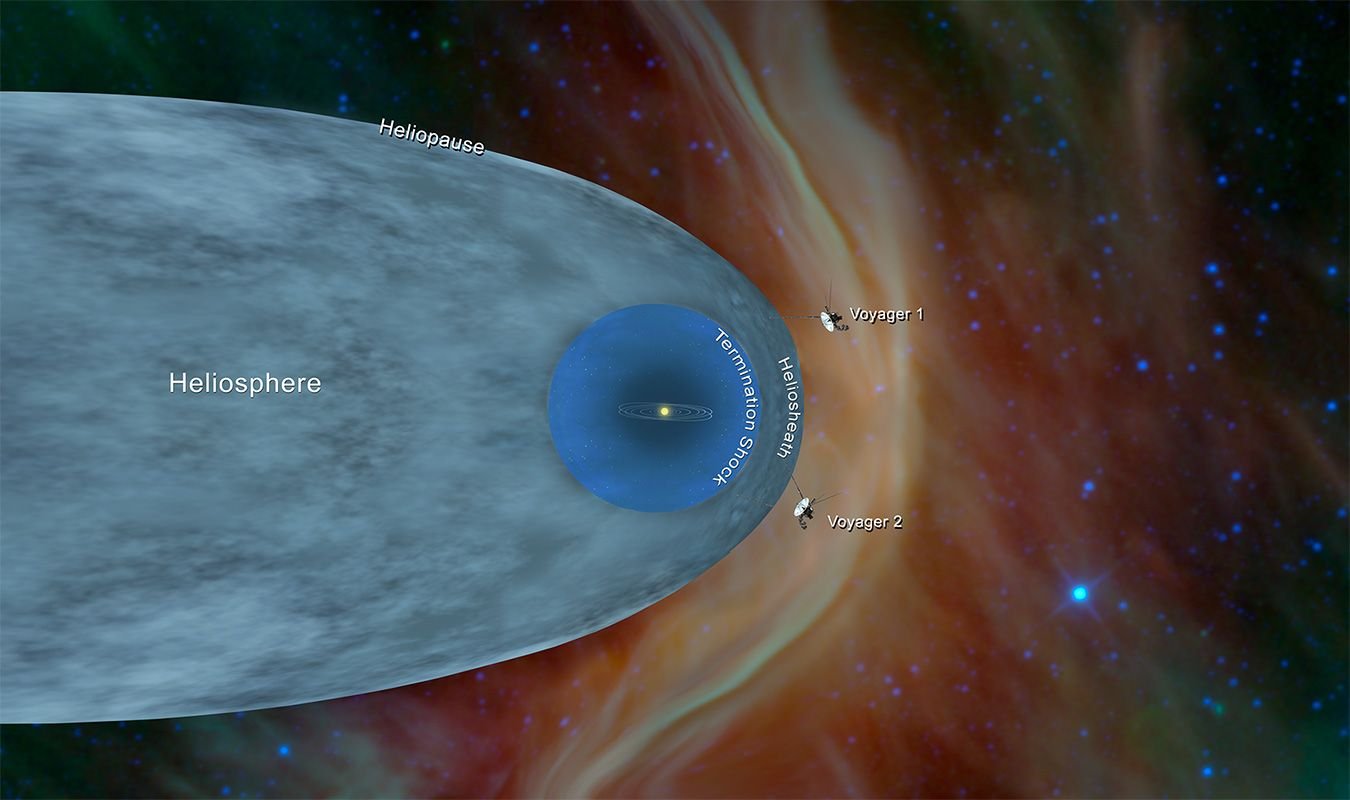
Image courtesy of NASA/JPL-Caltech
NASA’s Voyager Interstellar Mission is a testament to human ingenuity, curiosity, and perseverance.
On the whole, Voyager has accomplished bold objectives and made remarkable achievements. It has rewritten the textbooks on our understanding of our solar system and the universe beyond. Voyager launched over four decades ago and is still journeying into interstellar space. It has inspired scientists, engineers, and space enthusiasts to push boundaries. We continue to receive data and insights from Voyager, leading to more discoveries and surprises in the cosmos.


